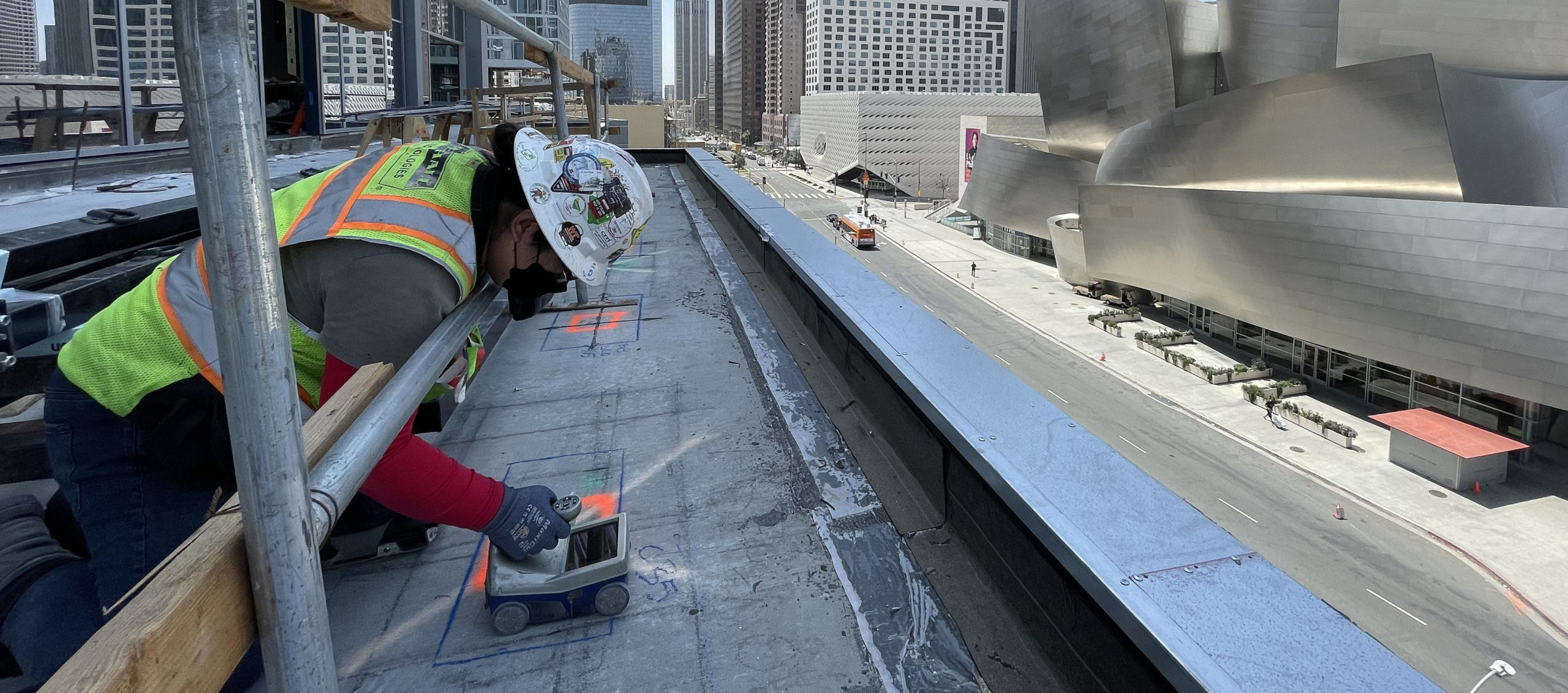Enhance Task Efficiency with RainierGPR Concrete Scanning Providers
Enhance Task Efficiency with RainierGPR Concrete Scanning Providers
Blog Article
Discovering the Midst: A Comprehensive Overview to Concrete Scanning and Its Diverse Applications
In the world of building and construction and facilities development, the precise procedure of concrete scanning holds a pivotal duty in guaranteeing the structural honesty and safety and security of projects. As innovation proceeds to progress, the applications of concrete scanning have actually expanded far beyond mere surface-level assessments.
Significance of Concrete Scanning
Understanding the importance of concrete scanning is important in guaranteeing the safety and honesty of frameworks throughout construction and renovation tasks. Concrete scanning uses advanced modern technologies such as ground-penetrating radar (GPR) and electro-magnetic induction to spot ingrained things, gaps, or other abnormalities within concrete structures.
Furthermore, concrete scanning plays a pivotal duty in guaranteeing conformity with building ordinance and laws that mandate the security of existing architectural elements throughout building tasks. By precisely drawing up the internal structure of concrete, scanning innovations make it possible for building specialists to make informed choices that support the architectural stability and durability of buildings and infrastructure jobs. Basically, the significance of concrete scanning exists in its ability to secure both the structural integrity and the workers entailed in building and construction undertakings.
Technologies Utilized in Concrete Scanning
Concrete scanning depends on sophisticated innovations such as ground-penetrating radar (GPR) and electro-magnetic induction to properly spot embedded objects and anomalies within concrete structures. Ground-penetrating radar operates by releasing high-frequency electro-magnetic waves right into the concrete.
Electro-magnetic induction, on the various other hand, functions by producing magnetic fields around a concrete structure through a transmitter coil. When steel things exist within the concrete, they interrupt these electromagnetic fields, creating eddy currents to move via the steel. By determining the changes in the electromagnetic areas with a receiver coil, the system can pinpoint the location of metal things in the concrete.
These advanced innovations play a vital function in non-destructive screening, guaranteeing the security and stability of concrete frameworks in numerous industries.
Applications in Construction Sector
Within the building and construction sector, concrete scanning modern technology locates diverse applications that enhance job efficiency and safety and security. Additionally, concrete scanning is used for finding spaces, such as air pockets or areas of degeneration within concrete, which can endanger the overall strength Clicking Here of a structure. Concrete scanning plays a crucial role in top quality control by validating the density of concrete covers over reinforcement, guaranteeing conformity with style specs and standards.

Security Advantages of Concrete Scanning
In the realm of building safety and security, the execution of concrete scanning technology provides an extremely important benefit in preemptively recognizing possible hazards and fortifying architectural honesty. By using innovative scanning techniques such as ground-penetrating radar (GPR) and electro-magnetic induction, construction teams can properly find rebar, post-tension wires, conduits, and other surprise objects within concrete structures. This positive technique dramatically minimizes the threat of accidental strikes during boring, cutting, or coring tasks, therefore protecting against costly damages, injuries, and project delays.
Furthermore, concrete scanning boosts employee security by providing real-time details concerning the architectural condition of concrete components. By attending to potential safety and security problems immediately, concrete scanning contributes to developing a secure functioning setting and reducing the likelihood of architectural failures or crashes on building websites.
Future Trends in Concrete Scanning
Arising advancements in scanning innovation are poised to change the area of concrete assessment and evaluation. One major fad that is getting grip is the assimilation of man-made intelligence (AI) and artificial intelligence algorithms right into concrete scanning devices. By utilizing the power of AI, these systems can analyze huge quantities of data accumulated during scanning procedures to provide more accurate and in-depth insights right into the condition of concrete structures. This can assist in finding hidden issues, anticipating possible structural failings, and even suggesting upkeep techniques.
An additional considerable fad is the growth of more mobile and straightforward scanning tools. Miniaturization of scanning tools enables much easier access to restricted spaces and remote locations, making evaluations much more extensive and efficient. Additionally, innovations in wireless communication innovations allow real-time data transfer and evaluation, assisting in quicker decision-making procedures.
In addition, there is an expanding navigate here concentrate on sustainability in concrete scanning technologies - RainierGPR Concrete Scanning. Manufacturers are progressively incorporating green products and energy-efficient functions right into their tools to minimize environmental impact. These future fads are readied to improve the efficiency, precision, and sustainability of concrete scanning techniques, shaping the sector's future landscape
Final Thought
In verdict, concrete scanning plays an important function in the construction sector by guaranteeing the safety and performance of various jobs. As technology developments, the future of concrete scanning holds appealing developments for improving construction procedures.
Report this page